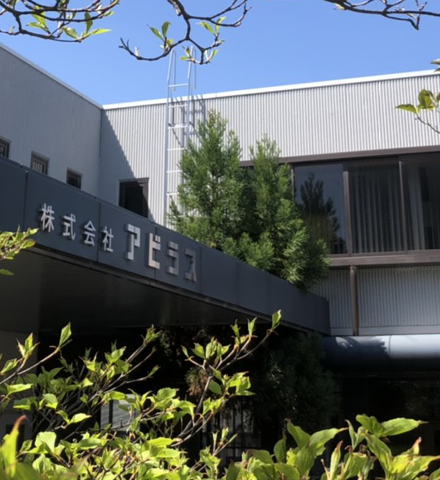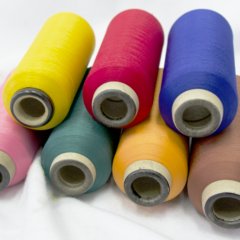3. Winding Process after Dyeing

Winding of Woolly Nylon Yarn
The woolly nylon yarn we handle is primarily done winding in-house at our own factory. After soaking in water during the dyeing process, the hanks (HANK) are adequately dried, then directly transported from the dyeing factory to our in-house winding factory. Subsequently, considering factors such as yarn type (thickness) and color, we apply further aging in our in-house winding factory.
Aging involves allowing the hanks, which are in an unstable state after hanking or dyeing, to pass several hours to several days while maintaining a constant humidity. This process ensures uniformity and stability in the quality of woolly nylon yarn.
1. Operation of Humidification Equipment in the Factory
Humidifier with humidity adjustment function


2. Hanking Operation (Kasesabaki)
After aging, the hanks are unraveled, and the yarn is done winding onto dedicated (mostly paper-made cylindrical) tubes. The hanking operation is crucial for preparing the yarn for winding and determines the product’s quality. Post-dyeing hanks are in a state where the yarn flow and hank shape are disrupted, similar to clothes in a washing machine. Skilled workers untangle this, align the yarn flow, and prepare it for winding to ensure the yarn doesn’t break during the process.
3. Winding
The prepared yarn is set on specialized machinery and done winding . Our company has maintained production using machines from Murata Seisakusho and Ishikawa Seisakusho, which were manufactured around 1970, for over 30 years since 1988. However, recognizing the emergence of new values and philosophies in the current environment, we imported the latest processing machine for nylon raw material (newest winding machine) in 2020. This allowed us to establish a production system that combines traditional and latest technologies.
– 1969: Murata Seisakusho Winder Machine
– 2020: Taiwa Seisaku High-Speed Winder Machine
4. Inspection after Winding
An inspector checks each yarn individually. This inspection is carried out by the most skilled worker in the factory. We inspect not only weight (or length) and winding shape but also consider the anticipated usage conditions of the product, ensuring a comprehensive examination.













